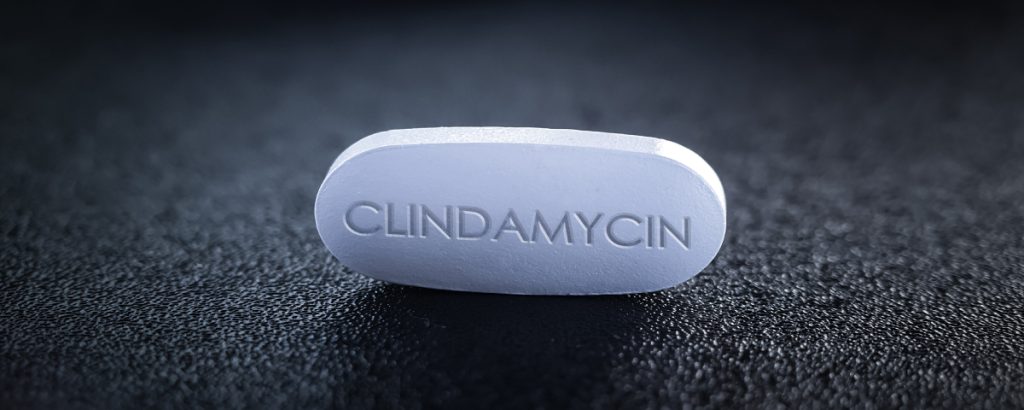When treating skin infections, clindamycin is generally the preferred one among dermatologists. The versatile medicine helps cure several skin conditions. Read on to learn about clindamycin uses and the amazing benefits of clindamycin for skin.
What is Clindamycin?
Clindamycin is an antibiotic drug. It is a topical application and oral drug available only on prescription. It works by inhibiting the growth of bacteria on the skin, therefore, effective in use for mild to moderate acne and other skin infections. It is available in the form of topical gels, creams, and lotions for topical use and capsules for oral intake.
Clindamycin Uses for Skin
The antibiotic properties of clindamycin make it a remarkable drug for skin concerns. The most noted clindamycin benefits include:
1. Treatment for Acne
Clindamycin is primarily used as a treatment for acne. Its topical application fights and prevents the growth of acne-causing bacteria. The drug is typically effective against Propionibacterium acnes, the bacteria that naturally live on the skin’s surface and is usually responsible for acne.
2. Treatment for Folliculitis
Folliculitis is an inflammatory condition caused due to infected hair follicles. Clindamycin fights the infection-causing microbes and helps clear the infections. It also provides relief from associated symptoms like redness, itching, and pustules.
3. Treatment for Cellulitis
Cellulitis is a fast-spreading bacterial infection. It causes redness, swelling, and pain in the infected area of the skin. Clindamycin, when taken orally, is seen as an effective way to control the spread of the infection.
4. Treatment for Impetigo
Impetigo is a contagious bacterial skin infection that primarily affects children. Clindamycin, prescribed in the form of topical cream, is used to treat and control the infection.
5. Treatment for Hidradenitis Suppurativa
Hidradenitis suppurativa is a chronic skin condition marked by painful lumps and abscesses in the armpits, groin, and other areas with skin folds. Topical and oral use of clindamycin provides effective relief from inflammation and controls bacterial growth.
6. Treatment for Boils
Boils are painful skin abscesses caused due to bacterial growth on the skin. Clindamycin targets the infection-causing bacteria, alleviating symptoms and providing relief.
Other Clindamycin Uses
Clindamycin is available for topical, oral, and intravenous use. Other conditions that are actively treated with clindamycin include:
- Soft tissue infections
- Infections of the respiratory tract
- Bone and joint infections
- Pelvic inflammatory disease
- Intra-abdominal infections
- Septicaemia and endocarditis
- Dental infections
How to Use Clindamycin?
Depending upon whether clindamycin is used orally or topically, the general guidelines remain the same.
- Do not use clindamycin without a prescription.
- Follow the doctor’s prescribed dosage and schedule.
- Do not overdose, and try not to miss any dose.
- Complete the full course of clindamycin even if you start feeling better. Leaving the prescription drug too early can increase the risk of antibiotic resistance.
Side Effects of Clindamycin
While clindamycin is generally safe and well-tolerated, but just like any other prescription drug, it too can cause side effects in some individuals. The most common side effects linked to clindamycin uses are:
- Skin irritation
- Gastrointestinal issues like severe bloody diarrhea or abdominal pain
- Allergic reactions like skin rash, itching, swelling, dizziness, or trouble breathing
- Antibiotic Resistance
- A liver disorder like jaundice
Precautions While Using Clindamycin
To ensure safe clindamycin use, take the following precautions:
- Clindamycin is not recommended for use during pregnancy.
- Avoid using clindamycin when breastfeeding, or talk to your doctor regarding the same.
- In case of prolonged clindamycin treatment, follow up with periodical liver and renal function tests.
- Clindamycin has reported drug interaction with neuromuscular blocking agents and erythromycin.

Conclusion
Clindamycin is a well-pronounced drug. An antibiotic that belongs to the lincosamide class of drugs, it works remarkably well against bacterial infections that mar the skin. As it helps control and prevent acne-causing bacteria, it helps treat a spectrum of skin conditions. However, clindamycin is not an over-the-counter remedy. Talk to your doctor for advice and follow usage guidelines and safety precautions to avoid side effects.













